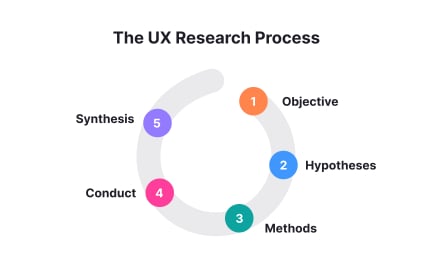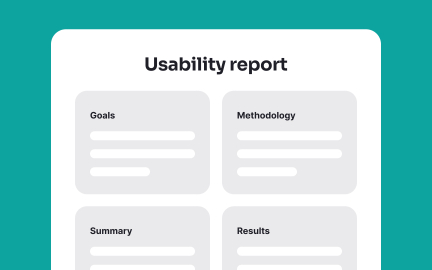User Research
User research is the study of user behaviors, needs, and motivations through observation, ensuring products are designed around real people’s experiences.

TL;DR
- Investigates user needs and behaviors.
- Uses qualitative and quantitative methods.
- Guides design and product decisions.
- Builds empathy and reduces assumptions.
Definition
User research is the process of gathering insights about users’ goals, behaviors, and pain points through methods like interviews, usability testing, and analytics to inform design and development.
Detailed Overview
User research ensures products are shaped by evidence rather than assumptions. It focuses on uncovering what people actually do, what they need, and what challenges they face. By studying these aspects, researchers help teams design products that are useful, usable, and satisfying.
A frequent question is what methods are used. User research typically blends qualitative and quantitative approaches. Qualitative methods include interviews, usability testing, and field studies, which provide depth and context. Quantitative methods include surveys and analytics, which provide measurable data at scale. Together, these approaches paint a complete picture of user behavior.
Another common query is how user research differs from market research. Market research explores broader customer trends, demographics, and purchasing habits. User research is narrower, focusing on product interactions. For example, market research may reveal that professionals need productivity tools, while user research shows where they struggle within a specific app interface.
Teams often ask how user research fits into the design process. Research informs every stage: early exploration identifies problems and opportunities, mid-stage evaluation tests prototypes, and post-launch studies measure ongoing performance. A continuous research practice ensures products evolve with changing needs.
Accessibility is often highlighted during user research. By involving participants with diverse backgrounds and abilities, research uncovers barriers that might otherwise be missed. Testing with different user groups ensures inclusivity and prevents designs from serving only a narrow audience.
Finally, user research drives business outcomes. Products informed by research see higher adoption, stronger retention, and fewer usability issues. By grounding product strategy in user evidence, organizations save resources, reduce redesign costs, and build trust with customers.
Learn more about this in the User Research Basics Lesson, a part of the UX Research Course.
Usability testing evaluates specific designs or prototypes, while user research covers a wider range of methods including discovery and behavioral studies.
Research provides the broader context that informs usability testing.
Interviews, surveys, usability testing, field studies, and analytics are common. Teams choose based on project stage, goals, and resources.
Combining methods ensures both depth and statistical reliability.
At all stages: early research defines needs, mid-stage testing validates prototypes, and post-launch studies monitor real use.
Ongoing research keeps products aligned with evolving expectations.
By including diverse participants and testing across varied contexts, research highlights barriers that may exclude certain groups.
This ensures products work inclusively for a wider audience.
It reduces guesswork by grounding decisions in evidence. Research insights help prioritize features, improve workflows, and strengthen customer satisfaction.
This connection makes user research both a design and business tool.
Recommended resources
Courses

Enhancing UX Workflow with AI

UX Research

Service Design
Lessons

Design Processes & Research Methods

Design Processes

User Research Basics
Briefs

Create a UX Research Survey

Develop a User Persona

Conduct a Content Audit
Assessments

Qualitative Research

Quantitative Research

Maze
Projects

User Persona | UX Research

FOURm - Landing Page for High-Conversion Fitness Startup













